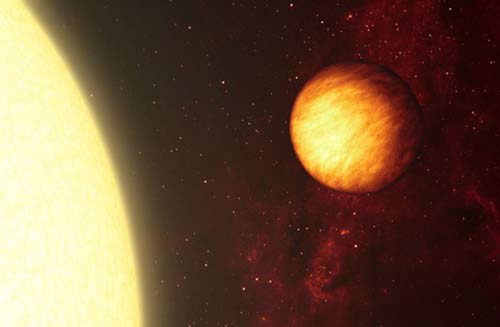gravitational lock

An exoplanet orbiting its star at just a fraction of the Sun-Mercury distance will become gravitationally locked to the star. NASA/JPL-Caltech/Robert Hurt
Gravitational lock, also known as tidal locking or captured rotation, is the tying of the orbital period of a planet or moon to its rotation period through a tidal effect caused by the gravitational pull of the primary. The gravitational lock experienced by the Moon, for example, explains why it always keeps the same face directed toward the Earth. Likewise, the five inner satellites of Jupiter complete one orbit for every axial rotation. Mercury is locked in a 3:2 resonance with the Sun so that it completes 3 orbits of the Sun (each lasting 88 days) in the time it takes to spin twice on its axis.
The opportunity for life to evolve on planets around red dwarf stars may be compromised by this phenomenon. So small is the habitable zone around a red dwarf that any planets within this zone may be forced into a 1:1 lock thus preventing the kind of climatic variations, such as wetting and drying, that may have been conducive to early biological development on Earth. It may be possible, however, to envisage alternative pathways leading to life that do not require a day-night cycle.


